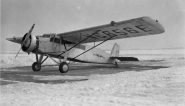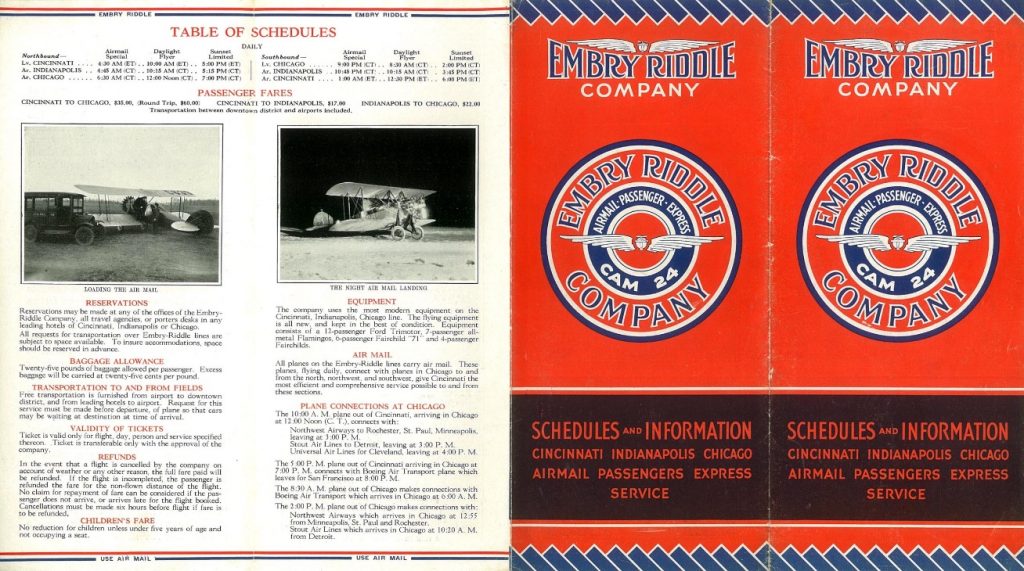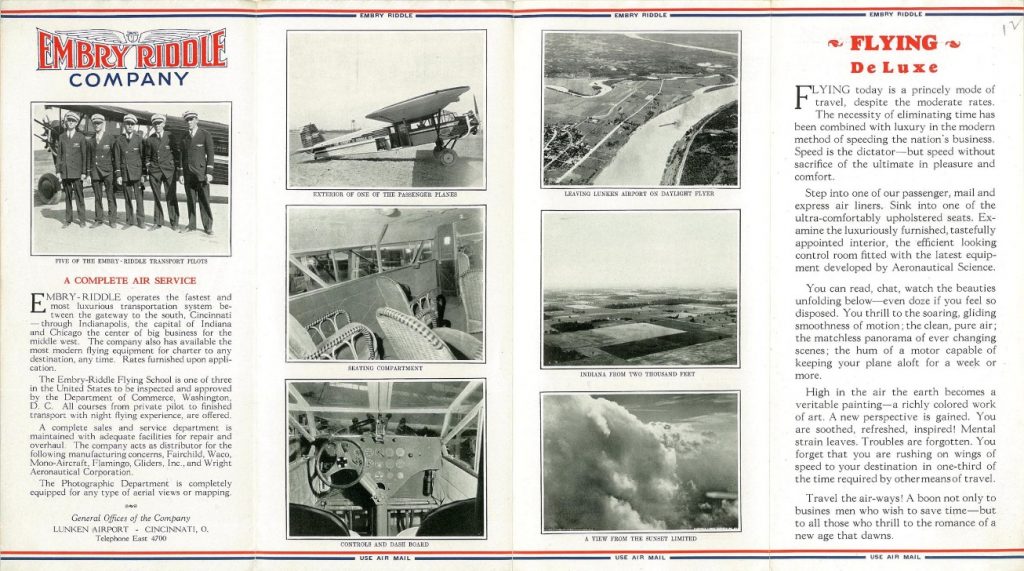
Charred Seats and Cow Pies: The Day a Flamingo Ran with the Bulls
By Russell Goutierez
Unscheduled landings are surprisingly common in the airline industry. Typically, some unforeseen event or condition causes a brief stop, after which the flight continues to the intended destination. Such was also the case for Captain Lionel “Steve” Stephan and his four passengers, if in a very memorable fashion – so memorable that he started his incident report by writing, “Oh boy, did I get the devil scared out of me today.”
Captain Stephan graduated from the Embry-Riddle Flying School in 1928. He flew for the Embry-Riddle Company, which then was based in Cincinnati, and for the Aviation Corporation (AVCO) after the two companies merged in 1929.


Captain Lionel “Steve” Stephan and his 1928 Embry-Riddle diploma. (Embry-Riddle Aeronautical University Archives)
On November 8, 1930, Captain Stephan – just 21 years old at the time – was the pilot and sole crew member aboard NC656E, a Metal Aircraft Corporation Flamingo G-2. Powered by a 410-hp Pratt & Whitney Wasp radial engine, the Flamingo carried a pilot and seven passengers and operated on Contract Air Mail Route 24 (CAM-24), which was awarded to Embry-Riddle in 1927 and remained with AVCO following the merger. CAM-24 linked Cincinnati and Chicago by way of Indianapolis.
Circa Autumn 1929. Note schedule at top left and delightful details like “CAM 24” in cover logo (it was Embry-Riddle’s only route) and “USE AIR MAIL” in bottom stripe (mail, not passengers, kept carriers solvent then). The USD 35.00 one-way fare equals about USD 540.00 in 2019, and included free airport transportation and 25 lbs. of luggage, with excess charged at 25 cents a pound. (Björn Larsson’s collection at www.timetableimages.com)
Pics inside the timetable included the Flamingo “air liner,” its “luxuriously furnished, tastefully appointed interior,” and the “control room.” The two “ultra-comfortably upholstered seats” forward are the ones that lost their hind legs to the fire. (Björn Larsson’s collection at www.timetableimages.com)
Workers load mail onto an Embry-Riddle Company Flamingo serving CAM-24 in February, 1929. (Embry-Riddle Aeronautical University Archives)
The excitement began shortly after the intermediate stop at Indianapolis. Mechanics had recently installed a more effective heater in the seven-passenger Flamingo, and the passengers enjoyed the warmth on the climb out of Cincinnati’s chilly Lunken Field. But the sun was up after departure from Indy and the cabin got stuffy, so someone closed the heater vent in the floor.
As the plane cruised at 4,000 feet about five miles east of Rensselaer, Indiana, a passenger opened the cockpit door and said four words no one in an airplane ever wants to hear: “We are on fire!”
Captain Stephan looked back and saw flames erupting around the floor duct. He gave the passenger a pyrene fire extinguisher, cautioning him not to use it unless absolutely necessary because of the bitter fumes it produced. The pilot then turned his attention to landing. Fortunately, he had flown in the area before and knew of a large pasture near the town.
Captain Stephan’s report stated that just a hundred feet above the ground, “…this guy cut loose with the extinguisher and the fumes were terrible, but I was able to open a window in time to level out and land.” As the plane rolled to a stop, Captain Stephan exited and raced around to the boarding door to find a hasty evacuation was already underway. Three passengers were out, but the fourth – the wife of another AVCO captain – was reluctant to disembark. Steers were grazing in the pasture and she feared stepping in, well, something unpleasant. Captain Stephan coaxed her out and got to work dousing the still-smoldering fire.
The kapok insulation between the wooden floor and metal fuselage had ignited because there was nowhere for heat to go when the floor vent was closed. Captain Stephan removed the insulation and soaked the entire area with pyrene, then gathered everyone for some collaborative decision-making.
“After a thorough inspection to see that the fire had not gone beyond this area,” he wrote, “I had the passengers look it over and we all decided it was OK to go on to Chicago.” The admirably courageous customers clambered aboard, all sitting toward the tail as some of the legs had burned off the two first-row seats.
By now a curious crowd had gathered to see what was going on. Captain Stephan enlisted their help in shepherding the bulls over to one corner of the field and soon the Flamingo was on its way.
NC656E, the Metal Aircraft Corporation Flamingo G-2 flown by Captain Stephan on November 8, 1930, wearing Universal Air Services markings in this undated photo. (Dan Shumaker | www.shu-aero.com)
One can only imagine how terrified the passengers were, and we know how the aftermath would play out today in the news and social media, but things were much different in 1930. In fact, the Flamingo wasn’t even taken out of service. Rather incredibly, a mechanic patched the floor in Chicago, disconnected the heater, declared the ship airworthy, and the return trip departed for Cincinnati just an hour behind schedule!
AVCO eventually became part of what is today American Airlines, and AA later honored Captain Stephan with its Distinguished Service Award (DSA) for his handling of the inflight emergency. He also helped organize the Air Line Pilots Association (ALPA) and his witness testimony aided the investigation into the ghastly 1956 midair collision between a TWA Constellation and a United DC-7 over the Grand Canyon. He retired in 1968 following a remarkable career that began in the open cockpit of a WACO biplane and concluded over 40 years and 35,000 flight hours later in the left seat of a Boeing 707.
Captain Lionel “Steve” Stephan, extraordinary pilot and aviation pioneer, died in 2003 at the age of 94.
 Captain Lionel “Steve” Stephan (left) at a 1985 Embry-Riddle reunion. (Embry-Riddle Aeronautical University Archives)
Captain Lionel “Steve” Stephan (left) at a 1985 Embry-Riddle reunion. (Embry-Riddle Aeronautical University Archives)
Trackback from your site.





